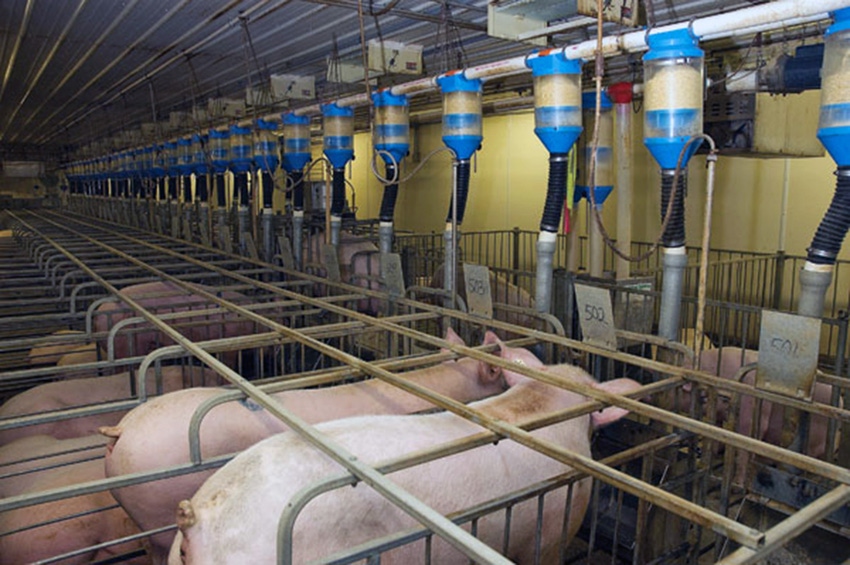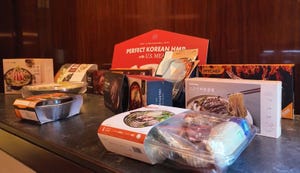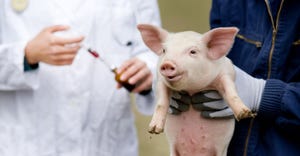Management strategies can mitigate impact of seasonal infertility
Further studies on photoperiod and hormonal changes will be essential to fully understanding the impact of seasonal infertility, but interventions serve as an aid in reducing its impact.
July 21, 2017

By Megan Schnur, DVM, Carthage Veterinary Service Inc.
Though swine are polyestrous, prior to domestication they were seasonal breeders. In North America pigs would become anestrous in the summer and early fall, presumably to avoid cold weather farrowing and reduce piglet mortality. Although clear evidence is lacking, these characteristics are thought to have been retained by domesticated swine to a certain degree.
The science behind this phenomenon attributes heat and lengthened photoperiod (the perceived change in the amount of daylight the animal is exposed to) to alterations in hormonal signals. The characteristic detrimental effects include: delayed onset of puberty, increased incidence of gilts that fail to cycle, missed breed targets, a reduction in conception and farrowing rates, total born, feed intake and an increase in wean-to-estrus intervals, pseudo-pregnancies and sows not-in-pig.
Seasonal infertility is a very frustrating problem, and there are many factors that exaggerate the impact of photoperiod: temperature, housing, social interaction, boar exposure, genetics and feeding. Fortunately, there are a few management strategies that can mitigate the impact.
First, the differentiation between seasonal infertility and health must be established. Establishing a routine disease monitoring plan with your veterinarian is critical — not to mention cost-effective — in maximizing production performance. Summer heat stress impacts the immune system by reducing an animal’s disease defense. Avoid over-crowding of animals and limit mixing and movements (prioritize early morning hours). PIC has established recommendations for square footage (see table).

PIC stocking densities
Animals that are immunologically challenged will not be able to perform to their reproductive potential. Specific infectious diseases have not been associated with seasonal infertility; nevertheless, it is important to keep an open line of communication with your veterinarian and take proactive measures.
It is typically recommended in late-spring to check your ventilation and cooling systems. During the summer months the recommended ventilation rates for a sow and litter, gestating sow and breeding sow are 14.1, 4.2 and 8.5 cubic meters per minute, respectively. For optimum circulation without drafts, the air should enter the room at a speed of 600 to 1,000 feet per minute with an average inlet-speed-goal of 900 feet per minute. When the heat index exceeds 84 degrees F, supplemental cooling systems such as evaporative drip or spray cooling and circulating fans should be implemented. Ensure you have extra supplies such as fan motors and generator backup testing in place to keep your barns running as comfortably as possible.
Historical data is one of your most important assets in identifying the period of time when seasonal productivity decreases and allows you to plan for adjusting breed targets accordingly. Some producers increase breed target by 5% to 10% starting in mid-July or early August. It is wise to always aggressively remove your problem breeders, especially in the summer months. Animals with multiple returns typically have a 70% conception rate at best.
Only 50% of reproductive performance can be attributed to the female. The heat and humidity also have a negative impact on boars, resulting in a reduction in semen output and quality. Many studs are filtered and air-conditioned, minimizing not only the impact of disease, but also seasonal temperature extremes. For producers who use artificial insemination, ensure your semen supplier regularly and intensely monitors semen quality. Most modern commercial studs screen semen in-house and routinely use a third-party lab for quality assurance. This monitoring is generally intensified in late-summer. Regardless of whether you employ AI or natural service, you need to ensure that boars (heat check or otherwise) have adequate rest days and an environment appropriate to minimize summer stressors. Keeping extra boar power on hand in the summer months and using heat check boars that are over 11 months of age is recommended.
Capturing maximum reproductive potential hinges on aggressive heat checking and pregnancy checking. Target at least one heat-no-serve event on gilts prior to breeding. Data strongly supports that one HNS event will increase total born by one pig, and potentially more with two HNS events. Even still, sometimes the best management is no match for the irregularity of sow and gilt cyclicity after periods of heat stress.
While not fully understood, the role of feed intake reduction is presumed to play intricately into seasonal infertility. When combined with increased energy requirements (as the animal uses more energy to keep cool by increasing respiratory rates), this leads to excessive weight loss in lactating females resulting in prolonged wean-to-estrus intervals and lower subsequent fertility. Similar mechanisms contribute to delayed onset of puberty in gilts. The following strategies have been historically used to maintain the nutritional plane as high as possible: avoid over-conditioning in late-gestation, keep feed fresh, feed more than twice per day with the largest feeding at night, wet feeding, and in general anything to stimulate appetite in lactation. Sufficient water supply and availability are crucial during the summer months, especially with the added use from cool cells. See table for recommended drinking water flow rates for growing pigs.

Guidelines for maintaining optimal pig health and growth
Further studies on photoperiod and hormonal changes will be essential to fully understanding the impact of seasonal infertility, but the interventions described here can serve as an aid in reducing its impact.
Tables from the PIC Wean to Finish Manual, 2014.
You May Also Like



